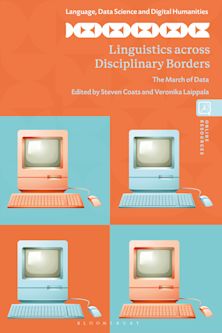Teaching and Learning Chinese as a Second or Foreign Language
Emerging Trends
Teaching and Learning Chinese as a Second or Foreign Language
Emerging Trends
Description
Teaching and Learning Chinese as a Second or Foreign Language, edited by Ko-Yin Sung, addresses three emerging themes in the field of Chinese language teaching and learning. (1) Increasingly ubiquitous in all language learning and teaching, and for the learning of Chinese as a second language in particular, information and communication technology (ICT) can serve as an important and effective tool. Several chapters focus on how certain emerging ICT tools are applied in teaching and learning Chinese as a second language. (2) Due to China’s economic and political influence, the number of students of all ages studying Chinese as a second language—but especially young learners—has increased in many parts of the world. Despite this, the research into teaching Chinese to young learners has lagged behind. Several chapters investigate young learners’ motivations and effective methods for assisting them to master the Chinese language. (3) The writing system of the Chinese language poses many challenges for learners, especially those more familiar with alphabetical languages. In light of this difficulty in learning Chinese characters, some of the chapters identify effective teaching and learning strategies to master the Chinese language.
Table of Contents
Note on Figures
Introduction
Ko-Yin Sung
STARTALK eTower: Increasing Chinese Language and Cultural Proficiency
Through Open Access Online Technology
Dali Tan, Angela Gunder, Shaoyu Chi, and Susan PicardLearner Autonomy and Chinese Vocabulary Learning with Technology
Yalun Zhou and Michael WeiUse Reflective Learning Model to Assess the Effectiveness of Online Language LearningPei-ni Causarano
Empirical Studies of Teletandem between U.S. and Taiwan Universities
Yan Gao and I-Ping P. FuWhy and How Should Chinese Be Learnt? A Preliminary Investigation regarding Italian High School Learners
Chiara RomagnoliWhy Do Children Learn Chinese? An Exploratory Study of Parental Beliefs, Classroom Motivational Strategies, and Young Learners’ Motivated Behaviors
Xin ZhangIntegrating Content and Language Instruction in a Chinese Immersion Classroom
Wenying ZhouUsing the Chunking Method in Teaching Chinese Characters in a Sixth Grade Chinese Dual Language Immersion ClassroomKo-Yin Sung, Hsiao-Mei Tsai, and I-Chiao Hung
Instructional Interventions and Character Learning Strategies: A study on Orthographic Study Assignments Yan Xie
Exploring Chinese Character Learning by English Speakers through Error AnalysisLan Zhang
Using Multimedia-assisted Materials to Facilitate the Self-Paced Learning of Traditional Chinese CharactersHsiu-Jen Cheng and Hong Zhan
Which Is More Effective: APP Game or Workbook? – An Experiment on Learning Chinese Character WritingXiaoshi Li and Wenying Zhou
DaZiBao: Multimodality in Learning and Communicating via Chinese Characters
Justin Olmanson, Xianquan Liu, Christopher C. Heselton, andAsha SrivastavaAcquiring Chinese Character Literacy Through Student-Produced VideosSujane Wu and Yalin Chen
Product details
| Published | Oct 23 2019 |
|---|---|
| Format | Ebook (PDF) |
| Edition | 1st |
| Extent | 1 |
| ISBN | 9781978755611 |
| Imprint | Lexington Books |
| Illustrations | 4 tables; |
| Publisher | Bloomsbury Publishing |
Reviews

ONLINE RESOURCES
Bloomsbury Collections
This book is available on Bloomsbury Collections where your library has access.

































